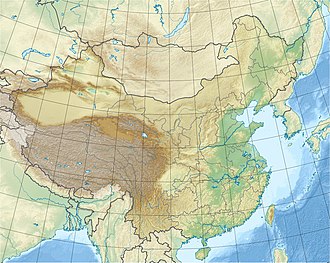| Siachen Muztagh | |
|---|---|
| Chinese :锡亚琴慕士塔格山 | |
Location of the Siachen Muztagh within the greater Karakoram region | |
 | |
| Highest point | |
| Elevation | 7,462 m (24,482 ft) |
| Coordinates | 35°35′N77°11′E / 35.583°N 77.183°E |
| Geography | |
| Location | A region controlled by China and claimed by India and a region controlled by India and claimed by Pakistan [a] |
| Parent range | Eastern Karakoram Range |
The Siachen Muztagh is a remote subrange of the eastern Karakoram Range. Close to 60% is in area controlled by China, 40% in area controlled by India. Pakistan claims the Indian-controlled portion as part of the Siachen Conflict. India claims the Chinese-controlled portion. India administers its portion as part of the Union Territory of Ladakh. China administers its portion as part of Xinjiang province.
Contents
All available maps and atlases (including a detailed delineation of the Siachen Muztagh's limits on the 1990 Swiss Foundation for Alpine Research "Karakoram Sheet 2" map) define the range as between the Shaksgam River on the north, the Urdok Glacier on the northwest (Urdok in Uyghur meaning duck), the Siachen Glacier on the southwest, the Teram Shehr Glacier and Rimo Glacier, and Indira Col on the south, and the uppermost Yarkand River on the east.
Its highest peak is Teram Kangri I, 7,462 metres (24,482 feet).




